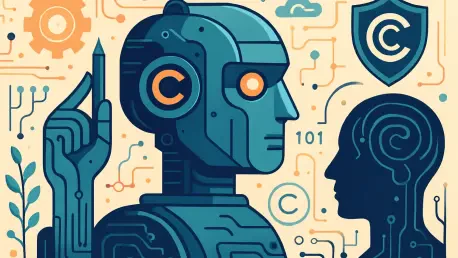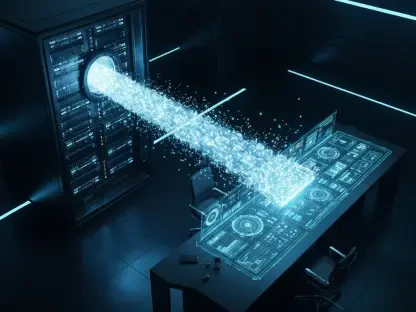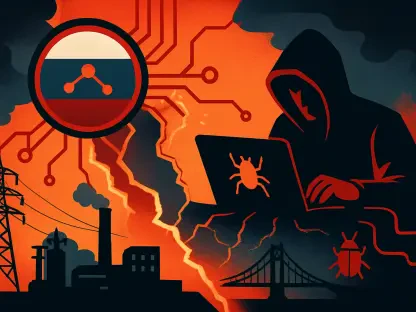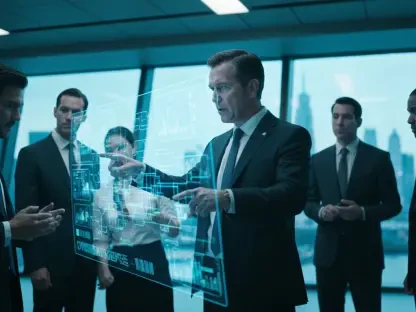In the dynamic realm where technology and creativity converge, a proposed text and data mining (TDM) copyright exception in Australia has sparked intense discussion across industries. Detailed in the Productivity Commission’s interim report, Harnessing Data and Digital Technology, this exception seeks to advance artificial intelligence (AI) development by permitting the use of copyrighted content—ranging from literature and music to visual arts—to train sophisticated AI models. While the promise of technological innovation looms large, offering new pathways for creation and efficiency, the arts sector stands at a crossroads, voicing profound concerns over the potential erosion of their rights and livelihoods. This article delves deep into the multifaceted implications of such a legal shift, examining how it might redefine the creative landscape in Australia. With global trends influencing local policies and AI training often bypassing national borders, the stakes for artists and cultural heritage are exceptionally high. What could this mean for the future of artistic expression in the nation? Let’s explore the critical issues, possible advantages, and underlying fears tied to this contentious proposal.
Voices of Alarm in the Creative Sector
The arts community in Australia finds itself gripped by apprehension over the proposed TDM copyright exception, fearing a significant rollback of protections that have long underpinned their work. Representatives from the Arts Law Centre of Australia, under the leadership of CEO Louise Buckingham, have articulated a stark warning: large technology companies stand poised to gain immense profits while artists, already navigating economic hardships amid rising living costs, could be left increasingly vulnerable. This sentiment resonates deeply within the sector, where the potential for financial and cultural loss looms large. The concern isn’t merely about revenue but about the very survival of creative professions, as the unchecked use of copyrighted material in AI training might undermine the value of original work. Such fears paint a troubling picture of a future where technology overshadows human artistry, prompting urgent calls for robust safeguards to protect those who form the backbone of Australia’s cultural identity.
Adding to this chorus of concern, prominent voices like author Tracey Spicer have publicly criticized the Productivity Commission’s stance, arguing that diluting copyright laws could spell disaster for individual creators. In widely read commentary, Spicer has accused the Commission of undervaluing the labor and passion invested in artistic endeavors, suggesting that the proposed changes dismiss the struggles of those who rely on copyright for their income. This perspective highlights a broader anxiety that AI might not just replicate creative outputs but could effectively replace human artists, posing a direct threat to the richness of Australian cultural narratives. The idea of AI as a “replacement problem” has gained traction, fueling debates over whether technological progress should come at the expense of the very individuals who contribute to a nation’s artistic heritage. This tension underscores the need for a policy that acknowledges and mitigates these risks while navigating the complexities of innovation.
Opportunities Presented by Legal Adaptation
Turning to the other side of the debate, the proposed TDM copyright exception carries with it a spectrum of potential benefits that could reshape the creative industries in positive ways. The Productivity Commission has emphasized that this legal change is not intended as a blank check for exploitation, proposing instead a framework embedded with safeguards to uphold the legal and commercial interests of copyright holders through carefully defined legislative criteria. Such measures aim to ensure that while AI development progresses, it does so without trampling on the rights of creators. This balanced approach suggests a pathway where technology and artistry might coexist, fostering an environment where innovation enhances rather than diminishes the cultural sector. The promise lies in creating a system that supports both technological growth and the protection of creative assets, potentially setting a precedent for responsible AI integration.
Further exploring this optimistic outlook, legal expert Professor Dilan Thampapillai from the University of Wollongong offers a cautiously supportive stance, highlighting how liberalized access to data for AI training could democratize creativity across Australia. By lowering barriers to entry, individuals with fresh ideas might harness AI tools to bring their visions to life in ways previously unimaginable, thus broadening the scope of who can contribute to the arts. Additionally, Thampapillai points to the possibility of cultivating a domestic AI industry, which could challenge the overwhelming influence of foreign tech giants and position Australia as a competitive player in the global market. This vision of localized innovation speaks to an opportunity not just for economic growth but for a reimagined creative landscape where technology empowers rather than overshadows human talent. Such potential benefits urge a reconsideration of initial fears, suggesting that with the right framework, a TDM exception might catalyze a new era of artistic exploration.
Embracing the Inevitability of Progress
The relentless march of technological advancement forms a critical backdrop to the discussion around a TDM copyright exception, reminding stakeholders of the need to adapt to an ever-changing world. Professor Thampapillai draws insightful parallels to historical shifts in copyright law triggered by past innovations, noting that each wave of change has inevitably produced both beneficiaries and those left behind. This historical lens encourages a balanced perspective, suggesting that while some artists might face challenges under a new legal framework, the core markets sustained by copyright are likely to persist with resilience. Embracing an open-minded approach to AI’s role in the arts becomes essential, as rigid resistance to change could stifle opportunities for growth. This viewpoint advocates for a dialogue that considers both the losses and gains, pushing for solutions that integrate technology without sacrificing the fundamental protections artists rely upon.
Beyond mere acceptance of change, there lies a compelling argument for how specialized AI tools could serve as allies rather than adversaries in the creative process. Unlike mainstream models that dominate headlines, niche AI applications hold the potential to enhance productivity in targeted artistic domains, offering tailored solutions that complement human ingenuity. Professor Thampapillai underscores this possibility, suggesting that such tools might streamline workflows or inspire novel approaches to creation, ultimately benefiting the arts sector. This pragmatic stance highlights the importance of viewing technology as a partner in progress, capable of augmenting rather than diminishing the cultural sphere. As the debate unfolds, this perspective challenges policymakers to craft regulations that harness these benefits while addressing the legitimate concerns of creators, ensuring that the integration of AI into the arts is both innovative and inclusive.
Balancing Global Insights with Local Needs
The international arena offers a rich tapestry of approaches to TDM policies, providing valuable lessons as Australia grapples with its own legislative path. The Productivity Commission has taken note of diverse frameworks, such as the European Union’s structured TDM exceptions for AI training and the United States’ expansive fair use doctrine that accommodates similar activities. These global examples reflect a widespread recognition of the need to update copyright laws to match the realities of AI, yet they also reveal the absence of a universal blueprint for implementation. For Australia, the challenge lies in synthesizing these international insights while prioritizing local cultural and economic contexts. The extraterritorial nature of much AI training—often conducted beyond national jurisdiction—further complicates this task, necessitating a policy that is both forward-thinking and protective of domestic interests, ensuring that global trends do not overshadow unique national priorities.
Delving deeper into this balancing act, the polarized nature of the Australian debate becomes evident, with stark divisions between advocates of innovation and defenders of traditional copyright. While the Productivity Commission leans toward adaptation with protective caveats, the arts sector remains steadfast in demanding robust compensation and safeguards against exploitation. Despite these differences, a subtle consensus emerges around the necessity of mechanisms to mitigate harm to copyright holders, reflecting a shared understanding that current laws fall short in addressing AI’s complexities. Crafting a TDM exception that resonates with Australia’s cultural heritage while embracing technological potential requires a nuanced approach, one that learns from global practices but remains tailored to the specific needs of local creators. This delicate equilibrium will be pivotal in shaping a future where innovation and artistry can thrive together, preserving the nation’s creative soul amid rapid technological change.
Shaping a Future for Art and Technology
Reflecting on the discussions that unfolded, the exploration of a TDM copyright exception revealed a landscape fraught with both promise and peril for Australia’s arts sector. The apprehensions of artists, echoed by figures like Tracey Spicer and organizations such as the Arts Law Centre, painted a vivid picture of potential cultural and economic loss. Meanwhile, the Productivity Commission and scholars like Professor Thampapillai offered a counterpoint, advocating for a future where AI could democratize creativity and bolster local innovation. As the debate progressed, it became clear that historical patterns of technological disruption provided lessons on resilience and adaptation. Moving forward, the focus should shift to actionable steps: developing a legislative framework that embeds strong protections for creators while fostering an environment where AI tools enhance rather than replace human artistry. Engaging stakeholders in ongoing dialogue and monitoring international outcomes will be crucial to ensure that Australia’s cultural legacy remains vibrant in this new technological era.









